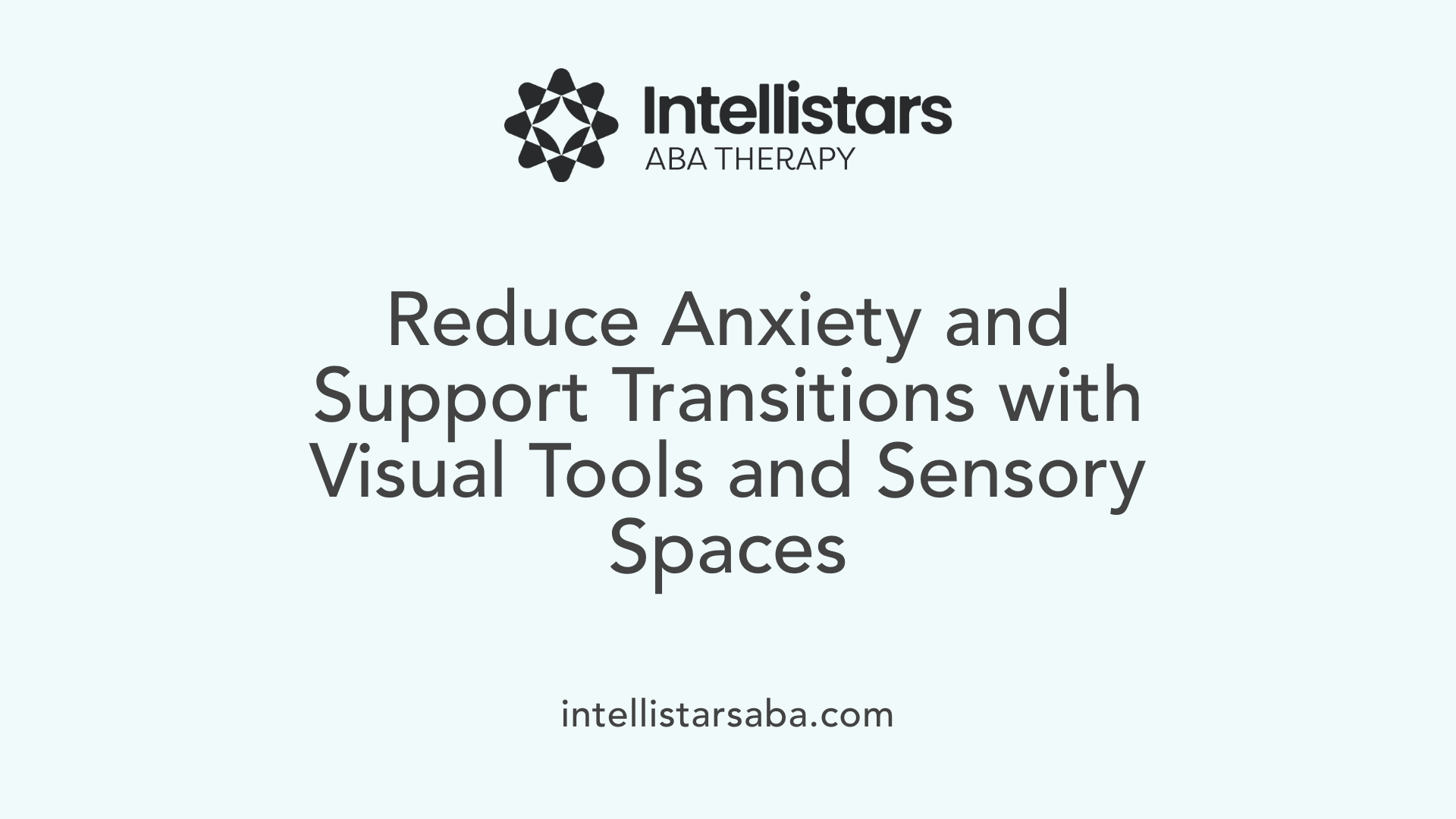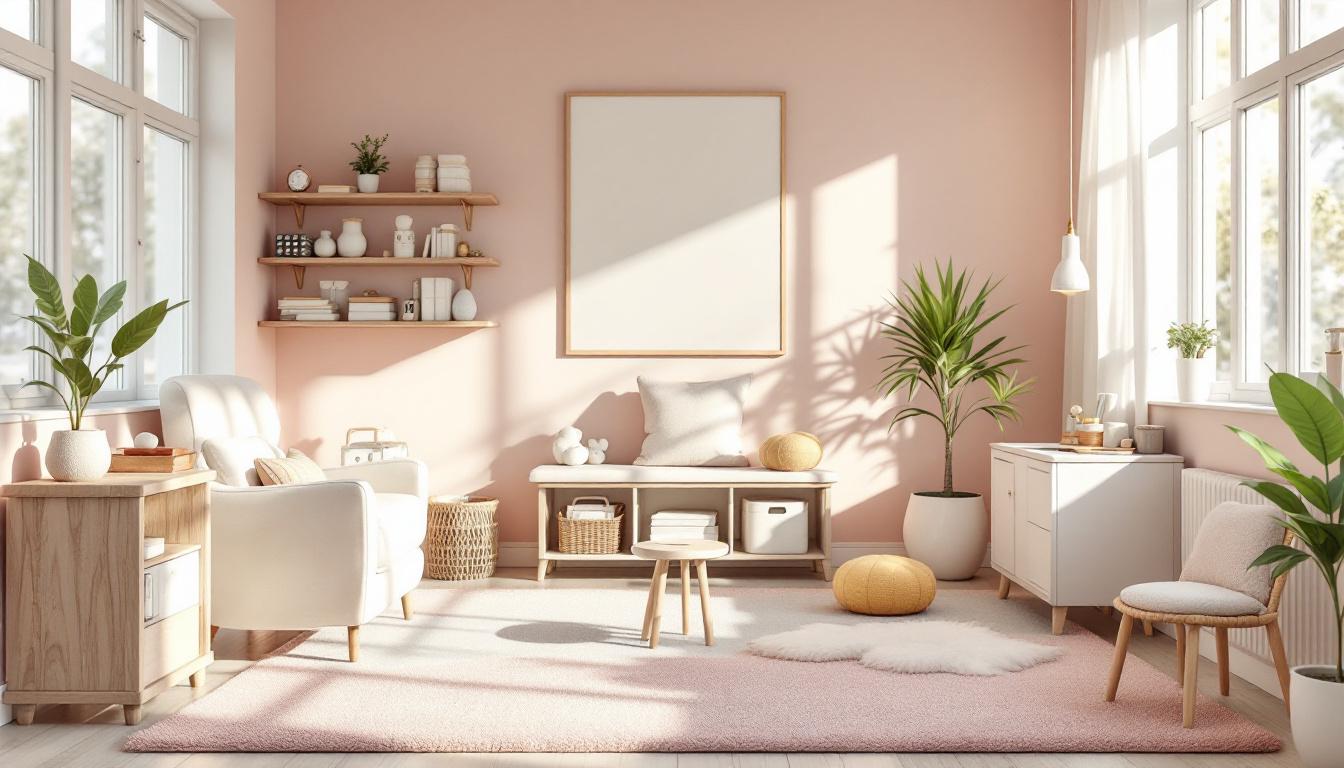Creating an Ideal Environment for Successful Home-Based ABA Interventions
Home-based Applied Behavior Analysis (ABA) therapy offers a personalized and comfortable setting for children with autism to develop essential skills. Building a positive, structured, and sensory-friendly environment is vital to maximize learnings and foster engagement. This article explores strategic approaches for setting up and maintaining an effective ABA therapy space at home, empowering parents and caregivers to support their child's growth comprehensively.
Designing a Comfortable and Sensory-Friendly Space
 Creating a space that is both welcoming and sensory-friendly is crucial for effective ABA therapy at home. A well-designed environment helps children feel secure, reduces overstimulation, and promotes engagement during sessions.
Creating a space that is both welcoming and sensory-friendly is crucial for effective ABA therapy at home. A well-designed environment helps children feel secure, reduces overstimulation, and promotes engagement during sessions.
Start by selecting a quiet, low-traffic area that exhibits calming colors and minimal clutter. Proper lighting is essential—preferably soft and natural, avoiding harsh or flickering lights that can cause discomfort. Incorporate sensory supports such as weighted blankets, soft lighting, noise-canceling headphones, and sensory toys to help children manage sensory overload.
Organizing therapy materials in labeled containers or shelves makes resources accessible and encourages independence. Essential tools include visual schedules, communication aids, and preferred reinforcers, which support clarity and motivation.
Safety measures should include securing furniture, removing hazards, and installing barriers if necessary, ensuring a secure environment for learning activities.
Using visual supports like picture schedules and visual instructions simplifies understanding and helps children navigate routines confidently. Incorporating consistent routines and structured transitions, such as designated pre-session activities, can also lessen anxiety.
Familiarly, involving family members in setting up the space fosters a supportive atmosphere. Regularly collaborating with ABA therapists ensures the environment adapts to the child's evolving needs and helps transfer learned skills into everyday life.
Overall, a thoughtfully prepared home environment aligns with ABA principles, making interventions more effective, manageable, and positive for both children and their families.
Establishing Routines with Visual Supports
 Creating a structured and predictable environment is essential for effective ABA therapy at home. One of the most effective strategies is implementing consistent daily routines using visual aids. Visual schedules, which can include pictures or symbols representing different activities, help children understand what will happen throughout the day. These tools reduce uncertainty, foster independence, and minimize anxiety.
Creating a structured and predictable environment is essential for effective ABA therapy at home. One of the most effective strategies is implementing consistent daily routines using visual aids. Visual schedules, which can include pictures or symbols representing different activities, help children understand what will happen throughout the day. These tools reduce uncertainty, foster independence, and minimize anxiety.
Using visual cues like timers, labeled containers, and step-by-step instructions can support transitions between activities. For example, a visual timer can signal the end of a preferred activity and the start of a new one, making changes smoother and less stressful for the child.
Reducing anxiety involves designing routines around calming visual supports and sensory-friendly spaces. Incorporating soft lighting, sensory toys, and calming textures can create a soothing environment during therapy. Additionally, familiar routines—such as a specific sequence for mealtime or playtime—help children feel secure and prepared for upcoming activities.
Transitions between tasks or activities are often challenging for children with autism. To facilitate these shifts, visual supports like countdown timers, picture schedules, or visual charts indicating the next activity can be used. These cues prepare the child mentally and provide clear expectations, making transitions more manageable.
Overall, establishing predictable routines through visual supports not only enhances understanding and reduces stress but also promotes skill development and independence. When combined with a sensory-friendly environment and active family participation, these strategies lay a strong foundation for successful in-home ABA therapy.
| Strategy | Tools Used | Benefits |
|---|---|---|
| Implementing predictable routines | Visual schedules, picture charts | Reduces anxiety, promotes independence |
| Supporting task transitions | Timers, visual cues | Eases transitions, minimizes behavioral issues |
| Creating sensory-friendly spaces | Soft lighting, weighted blankets, noise-canceling headphones | Promotes calmness, reduces overstimulation |
| Family involvement | Consistent reinforcement, shared routines | Ensures generalization of skills |
Promoting Engagement and Reinforcement Through Play and Rewards

What techniques can promote engagement, trust, and reinforcement during home-based ABA therapy?
Creating an environment that feels safe, predictable, and engaging is critical for successful home-based ABA therapy. To build trust, therapists often start by establishing structured routines with visual supports like picture schedules and social stories, which help reduce anxiety and provide clear expectations.
Incorporating the child's interests into therapy activities makes learning fun and motivates participation. Play-based activities, such as matching games, themed routines, or sensory toys, encourage children to stay engaged and enjoy the learning process.
Positive reinforcement is a cornerstone of ABA. Immediate rewards—such as verbal praise, tokens, or access to preferred objects—are used to reinforce desired behaviors and skills. Pairing reinforcement with fun activities or favorite items helps the child associate learning with positive experiences.
Additional techniques include prompting and modeling to guide behavior, along with task analysis to break skills into manageable steps. These methods support gradual independence.
Parents play a vital role by actively participating in therapy sessions, learning reinforcement strategies, and applying them consistently. This involvement fosters a supportive environment where skills are reinforced across different settings, promoting generalization and sustained progress.
How can challenges in establishing an effective home learning environment for ABA be overcome?
Addressing challenges in a home setting begins with a thorough assessment of the child's unique needs. This helps tailor the treatment plan, ensuring flexibility and relevance.
Creating a dedicated, comfortable learning space free from excessive distractions supports focus and stability. Establishing a routine incorporating visual schedules and reinforcement systems helps children understand what to expect and stay motivated.
Engaging family members through caregiver training enhances consistency and confidence in implementing strategies. Involving them in goal setting and scheduling therapy sessions at convenient times further promotes teamwork.
Utilizing technology, such as apps for data collection or virtual therapy sessions, can improve continuity and ease of tracking progress. Effective communication with professionals keeps caregivers informed and helps adapt strategies as needed.
Proactively planning for disruptions, managing caregiver and therapist burnout, and maintaining open dialogue help sustain therapy effectiveness over time. These measures ensure a supportive, flexible environment conducive to meaningful learning and behavior change.
Addressing Challenges in Establishing a Successful Home Learning Environment
Creating an effective home environment for ABA therapy requires careful planning and consistent effort. One of the first steps is assessing the child’s unique needs and customizing strategies accordingly. This personalized approach ensures that routines and activities are suitable and flexible enough to adapt as the child develops.
Establishing predictable routines with visual aids helps children understand what to expect, reducing stress and encouraging engagement. Dedicated, clutter-free spaces designed for learning and play serve as calming environments that promote focus and ease task transitions.
Engagement of family members is vital to sustain progress. Training caregivers on ABA principles, involving them in goal setting, and scheduling sessions at convenient times foster teamwork. Using technology such as apps or virtual sessions can support ongoing data collection, communication, and quick adjustments to interventions.
Overcoming challenges like distractions or resistance involves flexibility and proactive planning. Addressing caregiver and therapist burnout through support networks and self-care strategies is also essential to maintain a positive atmosphere.
In summary, tailored strategies, structured environments, and active family involvement are crucial for creating a thriving home learning space that maximizes the benefits of ABA therapy.
How can challenges in establishing an effective home learning environment for ABA be overcome?
Challenges in creating a productive home environment for ABA can be addressed through meticulous assessment of the child's needs, allowing for tailored plans. Establishing consistent routines and designated spaces minimizes confusion and anxiety. Visual schedules and reinforcement systems boost engagement. Involving family members in training, goal setting, and flexible scheduling promotes teamwork. Leveraging technology such as apps and virtual tools enhances continuity and simplifies data tracking. Open communication with professionals helps adapt strategies swiftly, while preparing for disruptions and caregiver support prevents burnout, ensuring a sustainable and effective learning environment.
What principles of ABA can be applied at home to maximize learning and development?
Applying ABA principles at home involves using positive reinforcement like praise or preferred activities to encourage good behaviors. Consistency in responses and clear antecedents and consequences create predictable routines that support learning. Breaking complex tasks into manageable steps, known as task analysis, helps children learn effectively. Regular data collection enables caregivers to monitor progress and make informed adjustments. Making learning enjoyable and individualized ensures motivation, while collaboration with professionals enhances strategy effectiveness.
Integrating ABA into Daily Life for Generalization and Independence
The success of ABA therapy often depends on how well it is incorporated into everyday activities such as mealtimes, play, and routines. By weaving ABA strategies into these familiar contexts, children learn skills in a natural, meaningful way that fosters broader generalization. For example, during mealtimes, parents can use visual prompts like picture cards to teach adaptive behaviors like requesting food or utensils. During play, therapists and families can set specific, reinforced social interactions—such as turn-taking or sharing—to develop communication and social skills.
Promoting practical skill application is crucial. This involves teaching children to use learned behaviors in real-world settings, like asking for help in cleaning up or following steps to complete a task independently. Consistently practicing these skills across different activities and locations helps children adapt behaviors more effectively outside of therapy sessions.
Supporting independence and social skills development goes hand-in-hand with these practices. For example, establishing routines with visual schedules helps children understand what to expect, reducing anxiety and increasing confidence. Encouraging children to participate actively in daily routines, reinforced by positive feedback, cultivates a sense of autonomy. In social contexts, deliberate opportunities for interaction—like family outings or community activities—can be used to practice social cues and cooperative behaviors, nurturing social competence.
Creating a supportive and structured environment at home enhances the generalization of skills learned during ABA therapy. Simple adjustments, such as organizing sensory supports like weighted blankets or calming lighting, and using visual aids and reinforcement strategies, help maintain consistency and motivation. Regular communication with ABA therapists ensures that strategies remain aligned and effective, supporting continuous progress as children become more independent and capable across daily settings.
Empowering Families Through Support and Collaboration
Creating an optimal home environment for ABA therapy involves more than just physical space adjustments—it requires active participation, collaboration, and consistency among family members and professionals. By establishing routines, sensory-friendly spaces, and using visual supports, parents and caregivers can significantly enhance engagement and facilitate meaningful learning. Communicating openly with therapists, reinforcing skills across daily routines, and addressing potential challenges proactively ensure that therapeutic goals are met effectively. Empowered families who understand and implement these strategies foster a nurturing space that promotes the child's development, independence, and overall well-being, making home-based ABA therapy a powerful tool for meaningful progress.
References
- Setting the Stage: Optimal ABA Therapy Home Setup Strategies
- Choosing Between Home-Based and Center-Based ABA
- How to Create a Structured Learning Environment at Home
- In-Home ABA Therapy: What Should Parents Expect and Do?
- Preparing for the New School Year: School-Based ABA Therapy
- Applied Behavior Analysis (ABA) | Autism Speaks
- How to Prepare Home for In-Home ABA Therapy | Inclusive ABA
- How to Create an ABA-Friendly Home Environment
- Guiding Success: ABA Techniques Tailored for Home Environment
- Preparing Your Home for In-Home ABA Therapy






